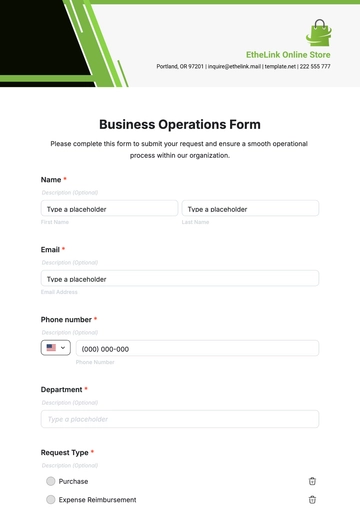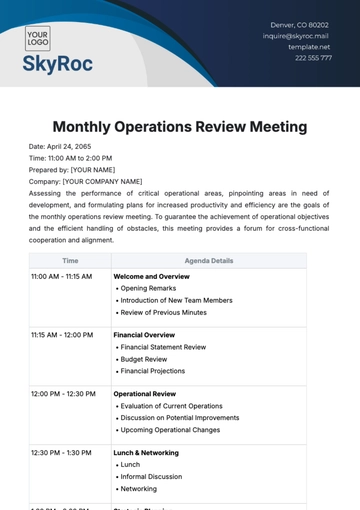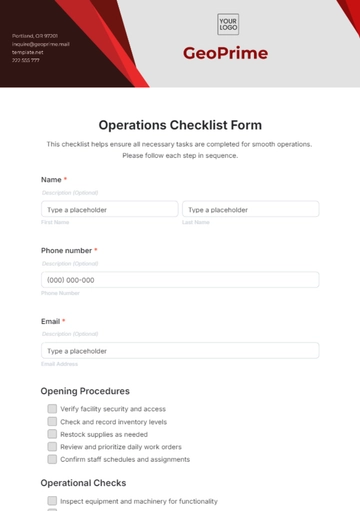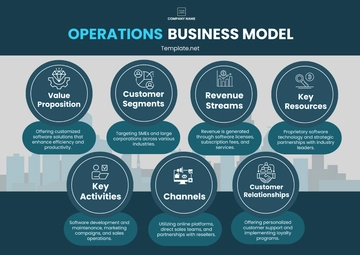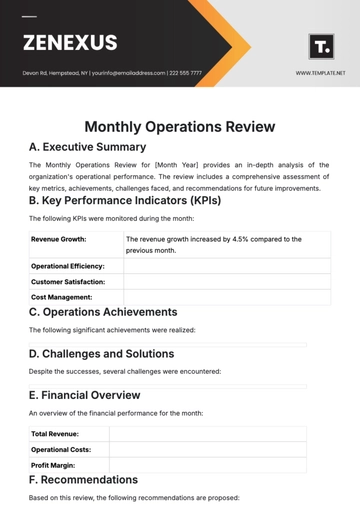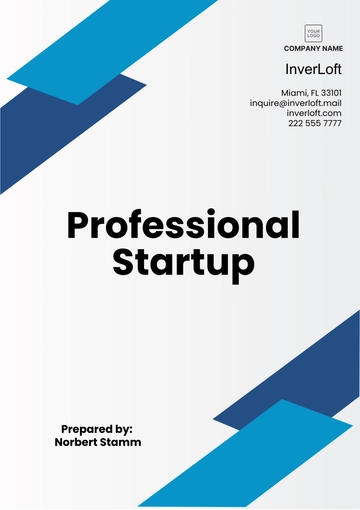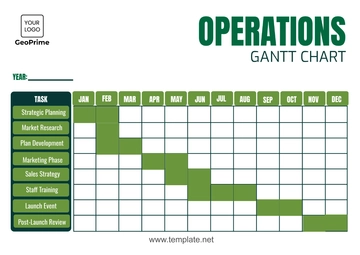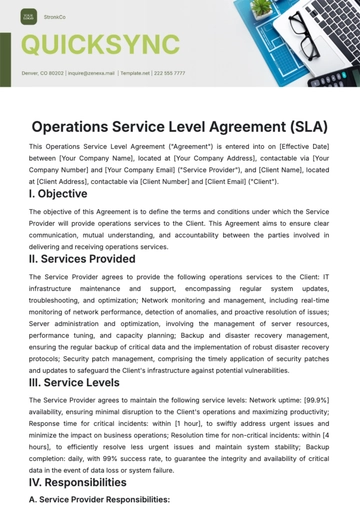OPERATIONAL EFFICIENCY BRIEF
Prepared by: [YOUR NAME]
1. Executive Summary
This Operational Efficiency Brief offers a comprehensive evaluation of the current state of operational efficiency within [Your Company Name]. It synthesizes data, insights, and analysis to present a clear picture of where [Your Company Name] stands in terms of productivity, cost management, and resource optimization. Through this document, we have identified several key areas where strategic actions can significantly enhance our operational performance.
2. Current Performance Analysis
his section provides an in-depth assessment of the current operational efficiency at [YOUR COMPANY NAME]. We examine our performance in critical areas against industry benchmarks to identify both strengths and areas for improvement. Our goal is to pinpoint opportunities where strategic improvements can significantly enhance our operational efficiency.
Performance Indicators | Present Status | Industry Standards |
|---|
Operational Costs | $45 million annually | $40 million annually |
Productivity Level | 75 units produced per employee per day | 85 units produced per employee per day |
3. Areas of Improvement
The Areas of Improvement section is dedicated to identifying and elaborating on potential areas within [Your Company Name]'s operations that, if improved, could significantly increase our operational efficiency. Based on the analysis conducted in the previous sections, we have pinpointed the following key areas that present opportunities for enhancement:
Process Efficiency
Improving process efficiency stands out as a critical area for development within our operations. This encompasses streamlining workflows, eliminating unnecessary steps, and adopting more efficient methods or technologies. Enhancements in process efficiency can lead to reduced operational costs, faster turnaround times, and higher productivity. Strategies might include the implementation of lean management techniques, automation of repetitive tasks, and continuous process optimization efforts.
Resource Allocation
Another vital area for improvement is our approach to resource allocation. Optimizing how we deploy our human, financial, and material resources can significantly impact our overall operational efficiency. Currently, there may be instances of resource underutilization or inefficient allocation that, if addressed, could enhance our output and reduce waste. Potential strategies for improvement include adopting more sophisticated resource management tools, improving demand forecasting, and enhancing cross-departmental coordination for resource sharing.
4. Recommended Strategies
Based on the comprehensive analysis of [Your Company Name]'s current operational performance and the identified areas for improvement, we recommend the following strategies to enhance operational efficiency. These recommendations are designed to address the specific challenges and opportunities highlighted earlier, with a focus on delivering tangible improvements and driving sustainable growth.
Implement Lean Management Practices
Adopting lean management practices across the organization can significantly improve process efficiency and reduce waste. Lean principles focus on value creation for the customer while minimizing activities that do not add value. This strategy involves:
Streamlining Processes: Reviewing and optimizing current workflows to eliminate unnecessary steps and reduce cycle times.
Continuous Improvement: Encouraging a culture of continuous improvement (Kaizen) where employees at all levels are engaged in identifying and implementing efficiency improvements.
Just-In-Time (JIT) Production: Reducing inventory costs and waste by producing or procuring goods only as needed.
Implementing lean management practices requires a comprehensive change management program to ensure buy-in from all stakeholders and training for employees to understand and embrace lean principles.
Invest in Technology and Automation
Leveraging technology and automation can lead to substantial gains in operational efficiency, particularly in areas identified as lagging in productivity or where manual processes predominate. This strategy includes:
Process Automation: Utilizing software and robotics to automate routine and repetitive tasks, freeing up human resources for more complex and value-adding activities.
Data Analytics and AI: Employing advanced data analytics and artificial intelligence (AI) to improve decision-making, optimize operations, and personalize customer experiences.
Digital Transformation: Undertaking a digital transformation initiative to modernize legacy systems and processes, enhancing agility and responsiveness to market changes.
5. Conclusion
The operational efficiency analysis for [Your Company Name] has provided a comprehensive overview of our current performance levels, identifying both strengths and areas in need of improvement. Through detailed comparison with industry standards, we have pinpointed specific opportunities to enhance our operational practices, streamline processes, and optimize resource allocation. The proposed strategies of implementing lean management practices and investing in technology and automation represent targeted efforts to address these areas, setting a clear path toward improved efficiency and competitiveness.
Brief Templates @ Template.net


